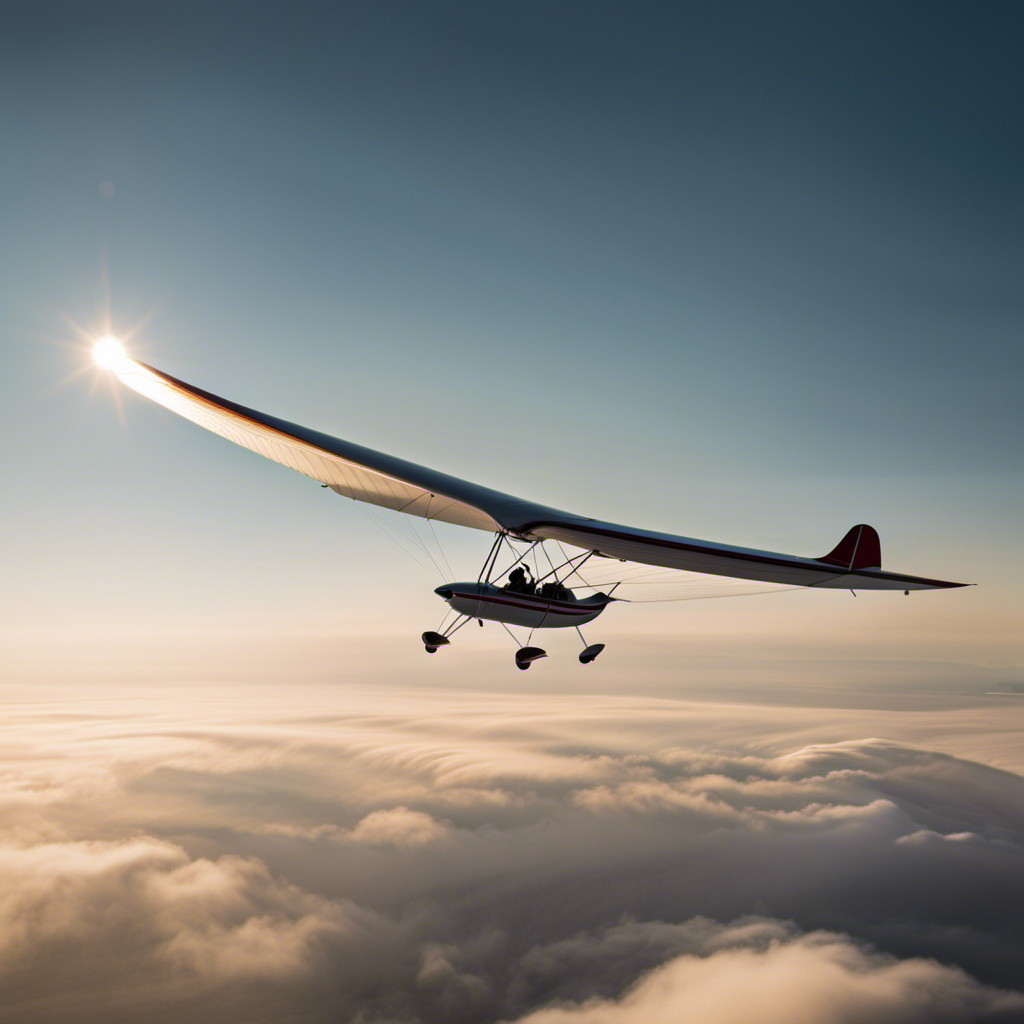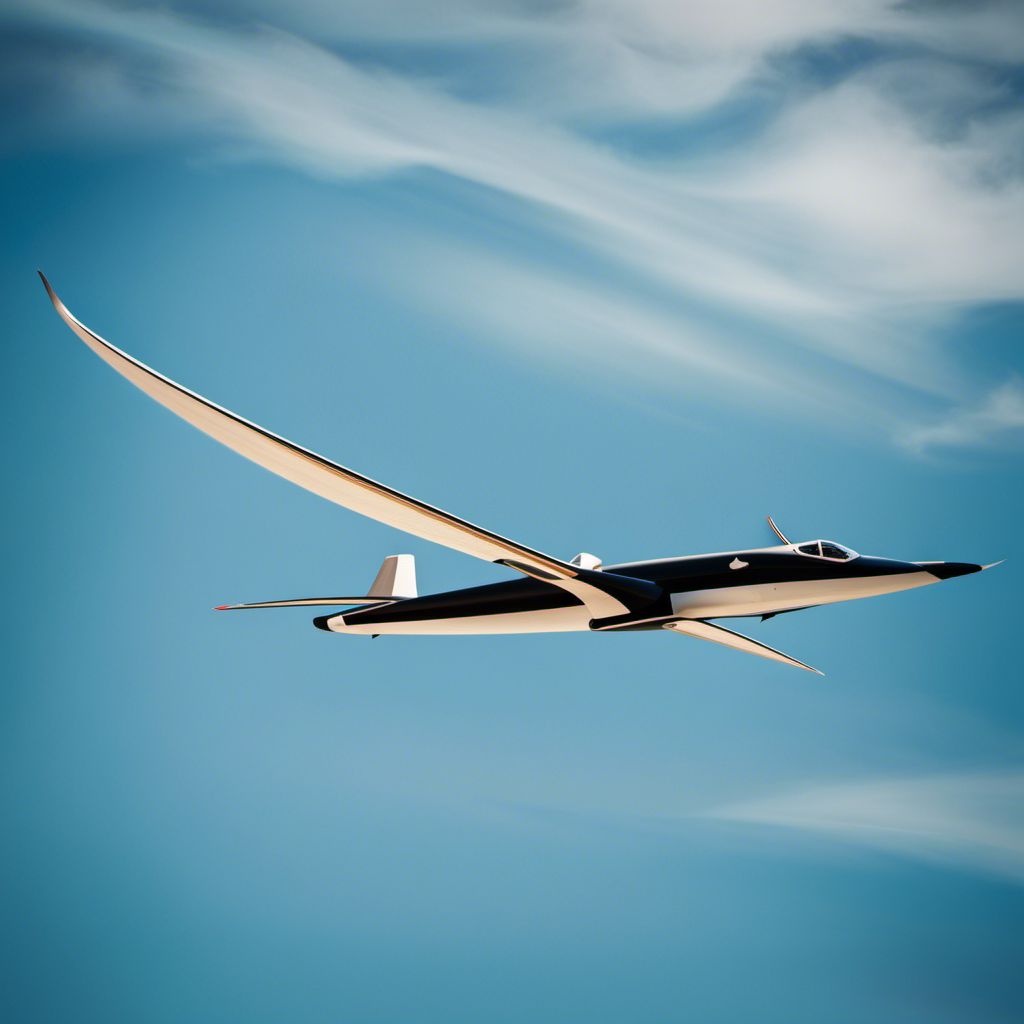As an instructor for glider flights, I lead students into the exciting realm of gliding, where the sky becomes their playground. Every day, I see the life-changing impact of flying as I assist future pilots in acquiring the essential skills and knowledge.
With certifications and training under my belt, I prepare and inspect the glider aircraft, conduct pre-flight briefings, and instruct students on takeoff and landing techniques. Throughout the journey, I monitor their progress, ensuring safety and providing in-flight guidance.
Join me as I share the joy and freedom of gliding with others.
Key Takeaways
- In-Flight Guidance and Instructions: A glider flight instructor is responsible for demonstrating proper techniques and maneuvers, communicating clear and concise instructions during flight, monitoring and correcting errors or deviations, and encouraging and motivating students to build confidence.
- Ensuring Safety and Emergency Procedures: Safety is a top priority for a glider flight instructor. They thoroughly brief students about emergency protocols, monitor instruments and students for safety compliance, remain calm and guide students during emergencies, and instill confidence and preparedness in students.
- Sharing the Joy and Freedom of Gliding: A glider flight instructor introduces people to the world of soaring through the sky, teaches students to control the glider and read air currents, and witnesses the excitement and wonder on their faces. They also embrace the beauty of flight while gliding and enjoy the freedom and joy of soaring through the sky.
- Creating Unforgettable Memories: A glider flight instructor creates memories that will last a lifetime by guiding students through the basics of glider control, embracing the beauty of flight with students, and creating unforgettable experiences.
Obtaining the Necessary Certifications and Training
To become a glider flight instructor, it’s important to obtain the necessary certifications and training. As an aspiring instructor, I started by completing the required flight hours as a pilot. Once I had gained enough experience, I enrolled in a specialized training program that focused on teaching others how to fly gliders.
This program covered topics such as instructional techniques, safety procedures, and emergency protocols. Additionally, I had to pass written exams and demonstrate my ability to effectively teach and instruct others. The training was both challenging and rewarding, as it prepared me for the responsibility of guiding and mentoring future glider pilots.
With my certifications in hand, I am now ready to take on the next step of preparing and inspecting the glider aircraft, ensuring they are safe and ready for flight.
Preparing and Inspecting the Glider Aircraft
Before taking off, I always make sure to meticulously check the glider’s instruments and inspect its overall condition. As a glider flight instructor, safety is my top priority, and this thorough pre-flight inspection is crucial.
I examine the altimeter, airspeed indicator, variometer, and other key instruments to ensure they are functioning properly. I also inspect the glider’s structure, control surfaces, and landing gear, looking for any signs of damage or wear. This attention to detail helps to ensure that the glider is in optimal condition for flight, minimizing any potential risks.
Once I am confident in the glider’s readiness, I transition into conducting pre-flight briefings with my students, sharing important information about the flight plan, safety procedures, and communication protocols.
Conducting Pre-Flight Briefings with Students
As a student, you should actively listen and take notes during the pre-flight briefing to ensure you have all the important information for a safe and successful flight. Here are four reasons why this is crucial:
-
Safety: Understanding the safety procedures and emergency protocols can help you react quickly and appropriately in case of any unforeseen circumstances.
-
Confidence: By paying attention to the briefing, you will feel more confident and prepared for the flight, knowing what to expect and how to handle different situations.
-
Efficiency: Taking notes during the briefing allows you to refer back to the information later, saving time and ensuring you don’t forget any important details.
-
Learning Experience: The pre-flight briefing provides valuable insights and knowledge about the glider, airspace, weather conditions, and flight objectives, enhancing your overall learning experience.
By actively participating in the pre-flight briefing, you set yourself up for a successful flight.
Now, let’s move on to assisting students with pre-flight preparations.
Assisting Students with Pre-Flight Preparations
Make sure you gather all the necessary equipment and documents before heading to the glider for your flight.
As a glider flight instructor, it is my responsibility to assist students with their pre-flight preparations. This involves making sure they have their logbooks, licenses, and any other required documents ready for inspection. Additionally, I ensure that students have the necessary safety equipment, such as helmets and parachutes, properly fitted and secured.
We also go through a thorough checklist to verify that the glider is in top condition before takeoff. Once all the preparations are complete, I instruct students on takeoff and landing techniques, which are crucial for a successful flight. By mastering these techniques, students can confidently navigate the skies and enjoy the exhilarating experience of gliding through the air.
Instructing Students on Takeoff and Landing Techniques
Once students have their necessary equipment and documents ready, we can begin instructing them on takeoff and landing techniques.
First, I explain the importance of a proper pre-flight check to ensure everything is in working order.
Then, I guide them through the process of taxiing, teaching them how to use the rudder pedals to steer and maintain control on the ground.
Next, we focus on takeoff procedures, discussing the correct angle of attack and airspeed for a successful liftoff.
Finally, we cover landing techniques, emphasizing the importance of a smooth touchdown and providing tips on utilizing spoilers and brakes effectively.
As students gain confidence in these fundamental skills, they are ready to move on to the next phase of their training: controlling and maneuvering the glider with precision and finesse.
Teaching Students How to Control and Maneuver the Glider
Teaching students how to control and maneuver the glider involves explaining the importance of weight shifting and demonstrating how slight adjustments can affect the glider’s direction. It’s fascinating to see the lightbulb moments when they grasp the concept and start to manipulate the glider with confidence.
To help them understand the principles behind weight shifting, I often use a simple visual aid: a three-column, three-row table. In the first column, I explain the different weight shift inputs, such as shifting the hips or leaning the upper body. The second column illustrates the corresponding effect on the glider’s direction, such as turning left or right. And in the third column, I provide tips and techniques to enhance their control. This visual representation aids in their understanding and accelerates their progress.
As students become more proficient in controlling the glider, it’s important to monitor and evaluate their progress to ensure they are developing the necessary skills to fly safely.
Monitoring and Evaluating Students’ Progress
Monitoring and evaluating students’ progress is essential to ensure they are developing the necessary skills to fly safely.
As a glider flight instructor, it is my responsibility to closely observe each student’s performance during their training flights.
I pay attention to their ability to control the glider, execute maneuvers, and make decisions in different flight scenarios.
By continuously assessing their progress, I can identify areas that need improvement and tailor my instruction to address their specific needs.
This process involves providing constructive feedback and guidance to help them refine their skills.
Through regular monitoring and evaluation, I can track their growth and ensure they are on track to becoming competent glider pilots.
Providing In-Flight Guidance and Instructions
As their skills develop, I can seamlessly transition into providing in-flight guidance and instructions to my students. It’s a crucial part of their training, as it allows them to apply what they have learned in the classroom to a real-life flying experience.
Here are some key aspects of my role as a glider flight instructor:
- Demonstrating proper techniques and maneuvers.
- Communicating clear and concise instructions during flight.
- Monitoring and correcting any errors or deviations.
- Encouraging and motivating students to build confidence.
Ensuring Safety and Emergency Procedures are Followed
After providing in-flight guidance and instructions to my students, ensuring their safety and well-being becomes my utmost priority. As a glider flight instructor, I am responsible for ensuring that all safety and emergency procedures are followed during our flights.
Before taking off, I thoroughly brief my students about the emergency protocols, such as what to do in case of an engine failure or a sudden change in weather conditions. During the flight, I constantly monitor the aircraft’s instruments and keep a keen eye on my students to ensure they are following all safety guidelines.
In the event of an emergency, I remain calm and guide my students through the necessary procedures, ensuring their safety at all times. By instilling a sense of confidence and preparedness, I create an environment where my students can fully enjoy the experience of gliding, knowing that they are in safe hands.
Transitioning into the next section, it is now time to share the joy and freedom of gliding with others.
Sharing the Joy and Freedom of Gliding with Others
To truly experience the exhilaration of gliding, you can share the joy and freedom with others by taking them on a breathtaking flight. As a glider flight instructor, it is my passion to introduce people to the incredible world of soaring through the sky.
The feeling of weightlessness as we release from the tow plane, the gentle whisper of the wind as it lifts us higher, and the panoramic views that stretch out before us are simply unforgettable. I guide my students through the basics of controlling the glider, teaching them how to read the air currents and make smooth turns.
Seeing their faces light up with excitement and wonder is the most rewarding part of my job. Together, we embrace the beauty of flight and create memories that will last a lifetime.
Frequently Asked Questions
How long does it take to obtain the necessary certifications and training to become a glider flight instructor?
It takes several years to obtain the necessary certifications and training to become a glider flight instructor. This involves acquiring a private pilot’s license, accumulating flight hours, and completing specialized training programs.
What are the specific steps involved in preparing and inspecting a glider aircraft before a flight?
Preparing a glider for flight is like a ballet of precision. Every nut and bolt is checked, wings are inspected for damage, and instruments are calibrated. It’s a meticulous process that ensures a safe and exhilarating journey.
How do instructors conduct pre-flight briefings with students and what information is typically covered?
During pre-flight briefings, I cover important information with my students. We discuss the flight plan, weather conditions, emergency procedures, and any specific areas of focus for the lesson. Safety is always the top priority.
What kind of assistance do instructors provide to students with pre-flight preparations, such as equipment checks and safety procedures?
I assist students with pre-flight preparations by guiding them through equipment checks and safety procedures. For example, I recently helped a student inspect the glider’s control surfaces and taught them how to properly secure their harness for a safe flight.
Are there any specific techniques or tips that instructors focus on when teaching students how to control and maneuver the glider?
When teaching students how to control and maneuver the glider, my focus is on techniques like weight shifting and using the control surfaces. I also provide tips on reading the wind and adjusting the flight path.
Conclusion
As a glider flight instructor, my days are filled with the thrill of guiding students through the skies. From obtaining certifications to conducting pre-flight briefings, my goal is to ensure safety and impart knowledge.
With every flight, I witness the progress of my students as they learn takeoff and landing techniques. Monitoring their growth and providing in-flight guidance brings me joy.
Safety is of utmost importance, and I am always ready to handle emergencies. Gliding allows me to share the boundless joy and freedom of the skies with others, creating unforgettable experiences.









